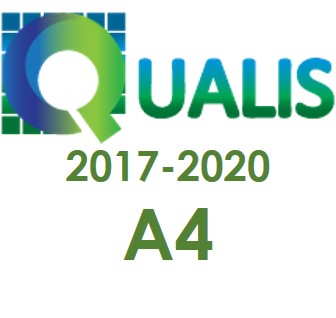Vocalic Harmony as a Trigger to Structural Changes in Guajá
DOI:
https://doi.org/10.22481/el.v4i1.1024Keywords:
Indigenous languages, Tupí-Guaraní, Guajá, Linguistic descriptionAbstract
The Guajá language is spoken by about 250 individuals who live in the Awá, Caru and Alto Turiaçú Indigenous Areas on the northeast of the state of Maranhão, Brazil. It is a Tupí-Guaraní language of the branch VIII, with Takunyapé, Urubú-Ka’apór, Wayampí, Wayampipukú, Emérillon, and Zo’é (Rodrigues and Cabral, 2002). This paper deals with on-going speech structural changes in youngsters, contrasting these data to older generation ones, emphasizing possible consequences of the vocalic harmony process in youngsters’ speech production to the stability of the relational morphemes system, which is one of the most conservative structural feature of the Tupí-Guaraní family.
KEYWORDS: Indigenous languages. Tupí-Guaraní. Guajá. Linguistic description.
Downloads
References
CLEMENTS, G. N. The geometry of fonological features. Cambridge: Cambridge University Press, 1985.
CLEMENTS, G. N.; HUME, E. V. The internal organization of speech sounds. Cambridge: Blackwell, 1995.
CUNHA, P. Análise fonêmica preliminar da língua Guajá. 1987. 68f. Dissertação (Mestrado em Lingüística) – Instituto de Estudos da Linguagem da Universidade Estadual de Campinas, Campinas, 1987.
MAGALHÃES, M. M. S. Aspectos fonológicos e morfossintáticos da língua Guajá. 2002. Dissertação (Mestrado em Lingüística) – Instituto de Letras da Universidade de Brasília, Brasília, 2002.
RODRIGUES, A. D. A case of grammatical affinity among Tupí, Karíb, and Macro-Jê. (ms), 1990.
RODRIGUES, A. D. Contribuições das Línguas Indígenas Brasileiras para a Fonética e a Fonologia. In: SOLÁ, D. F. (Org.). Language in the Americas. Ithaca: Cornell university, p. 263-267, 1984.
RODRIGUES, A. D. Nasalização e Fronteira de Palavra em Maxakali. In: ENCONTRO NACIONAL DE LINGUISTICA, 5, 1981. Anais... v. 2. Rio de Janeiro: UFRJ, 2001.
RODRIGUES, A. D. Relações Internas na Família Lingüística Tupí-Guaraní. Revista de Antropologia, São Paulo, v. 27, p. 33-53, 1985.
RODRIGUES, A. D.; CABRAL, A. S. A. C. Revendo a Classificação Interna da Família Tupí-Guaraní. In: RODRIGUES, A. D.; CABRAL, A. S. A. C. (Orgs.). Línguas Indígenas Brasileiras: Fonologia, Gramática e História. Tomo I. Belém: Editora UFPA, [s.p], 2002.
Downloads
Published
How to Cite
Issue
Section
License

Estudos da Língua(gem) is licensed under a Creative Commons Attribution 4.0 International License.
Authors who publish in the journal Estudos da Língua (gem) agree with the following terms:
The journal Estudos de Língua(gem) maintains the copyrights of the contributions published. These rights include the publication of the contribution and make its content available for free through the portal.







